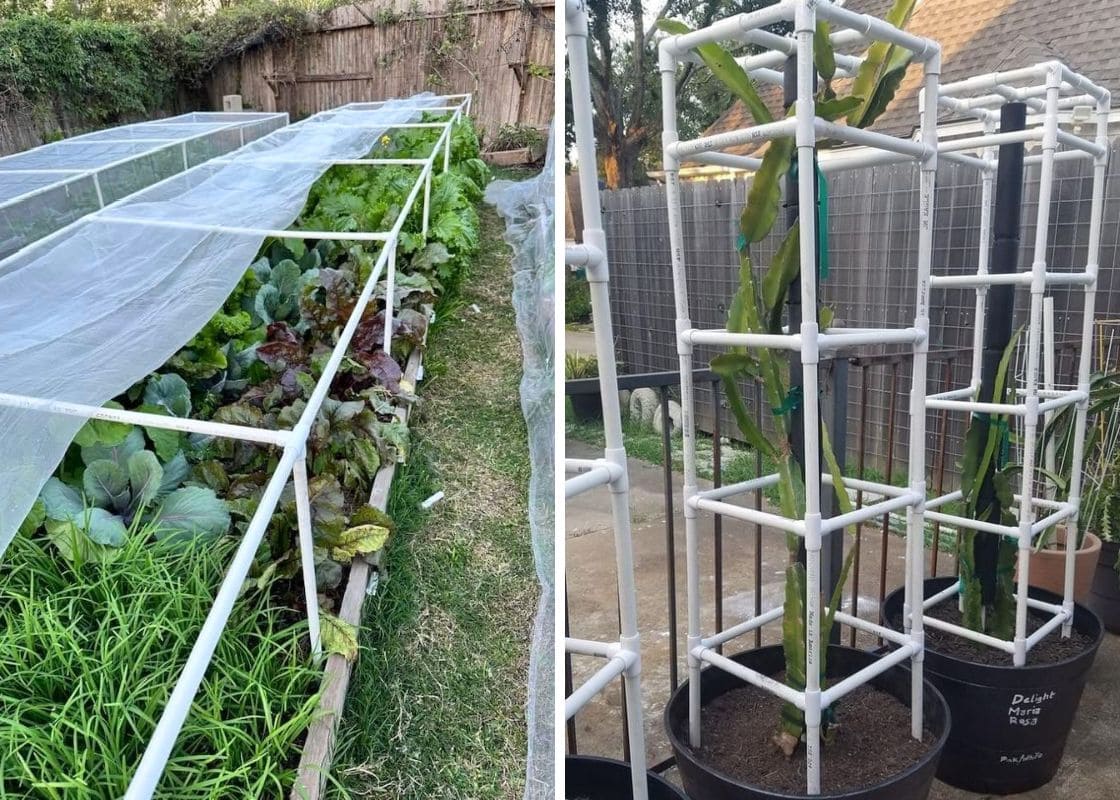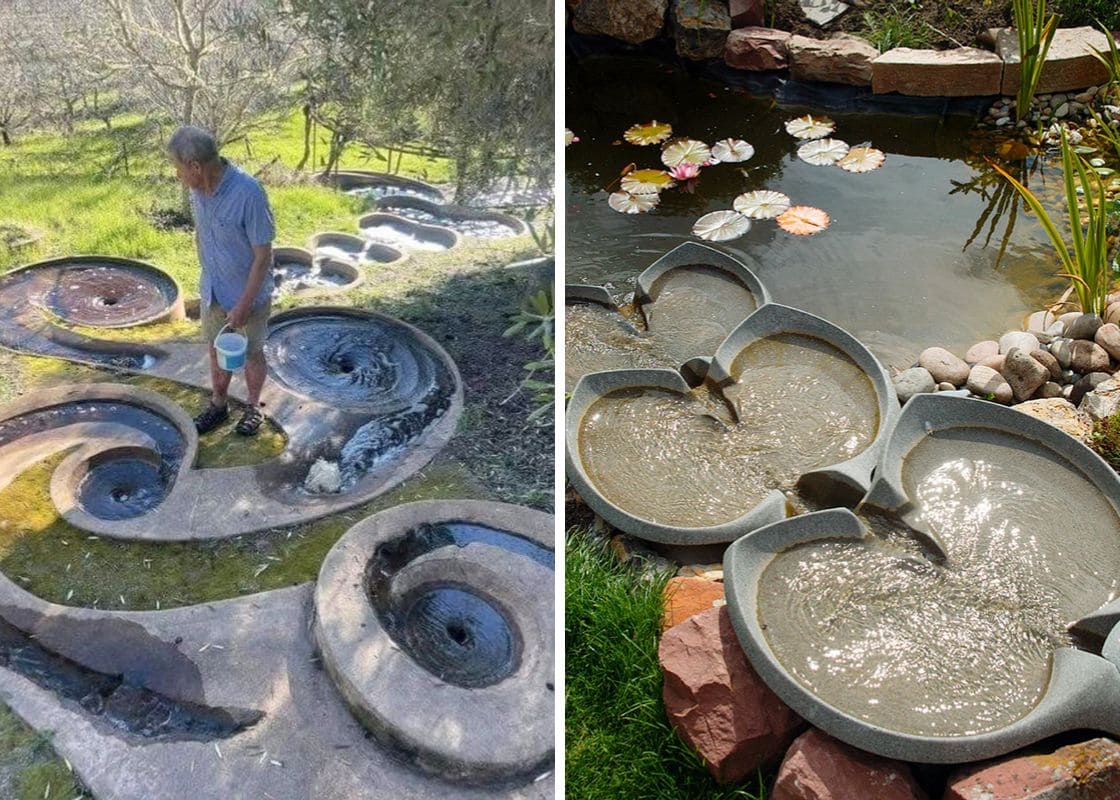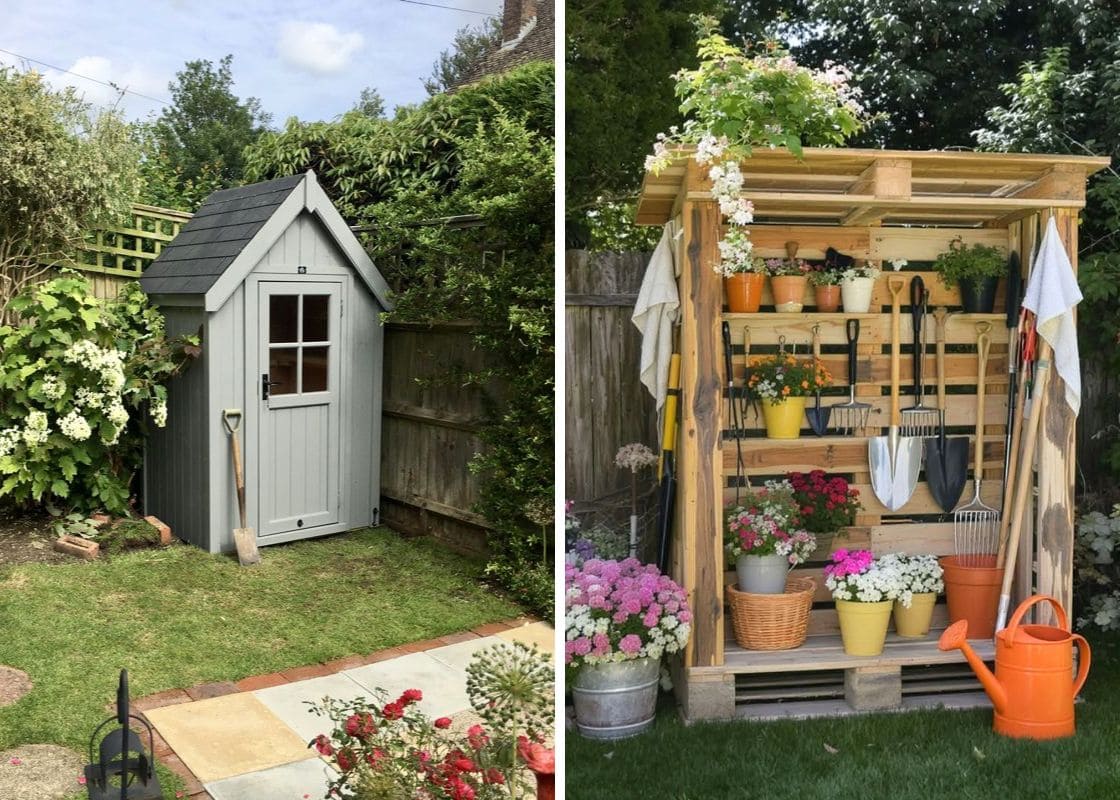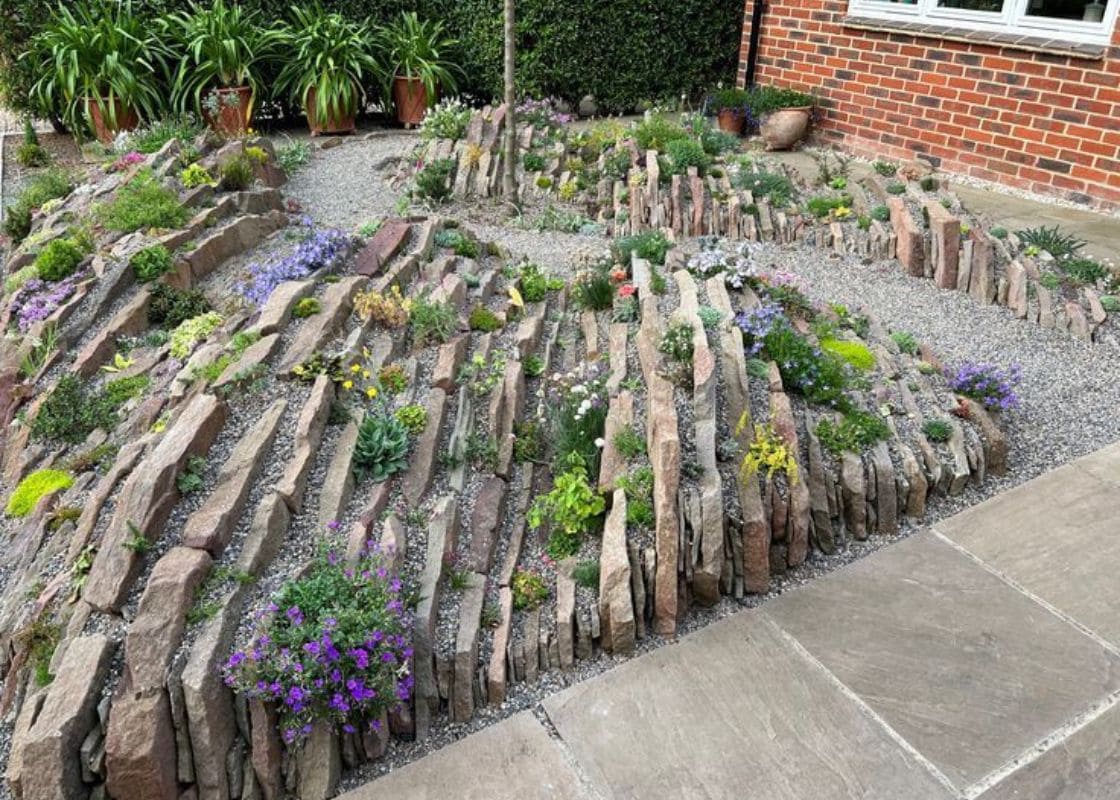When crafting flower arrangements, flowers often steal the spotlight, but the right foliage is just as essential for a balanced and visually appealing display.
Foliage adds texture, color variation, and depth, enhancing the arrangement’s fullness and aesthetic appeal.
Whether you’re a seasoned florist or an enthusiastic hobbyist, the following foliage sure to bring the best and unique arrangement for your home decor.
Eucalyptus (Eucalyptus globulus)
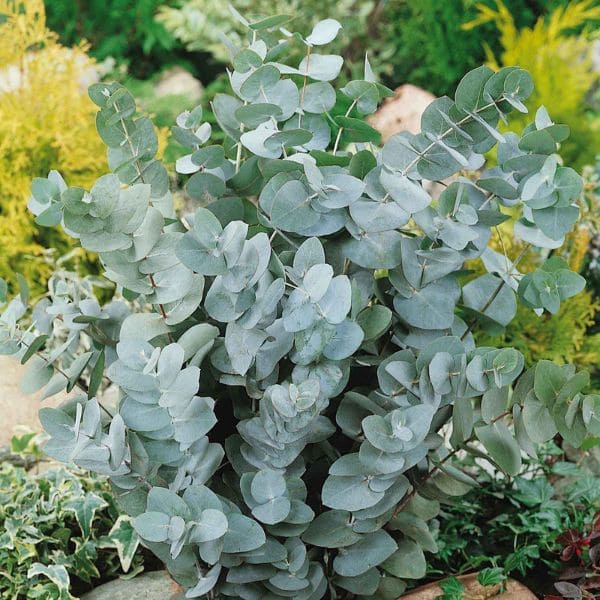
Eucalyptus stands out in flower arrangements for its striking appearance and pleasant fragrance.
Its long, elliptical leaves, ranging in shades from green to silver, add height and dimension to bouquets. The distinctive, fresh scent of eucalyptus also enhances the aromatic appeal.

For optimal longevity, harvest eucalyptus branches when the leaves are mature and remove lower leaves before arranging to prevent bacterial growth, ensuring a vase life of up to 14 days.
Leatherleaf Fern (Rumohra adiantiformis)
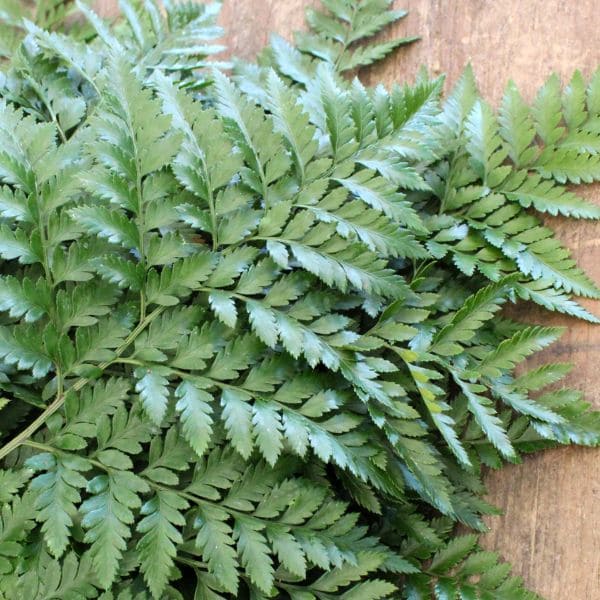
Leatherleaf Fern is prized for its hardy nature and lush, green fronds that reach up to 24 inches.
These glossy, dark green, feathery fronds provide a textured backdrop for various arrangements.
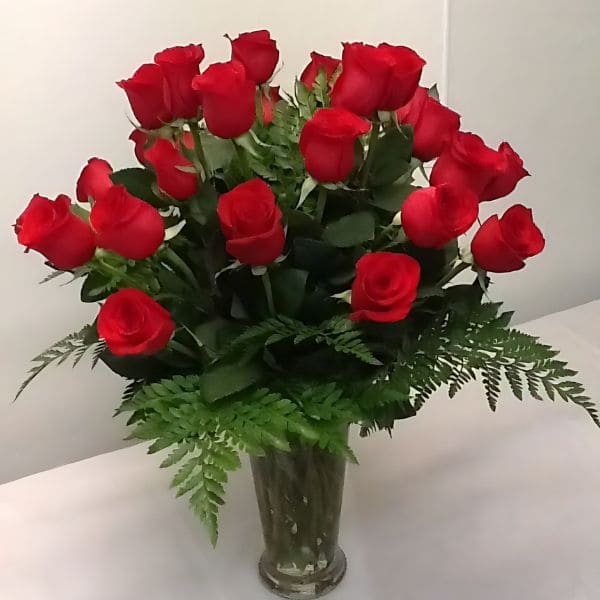
You should harvest mature fronds for extended longevity, it can last up to 21 days with proper care.
After that, clean stems and trim ends before arranging to enhance water absorption.
Aspidistra (Aspidistra elatior)
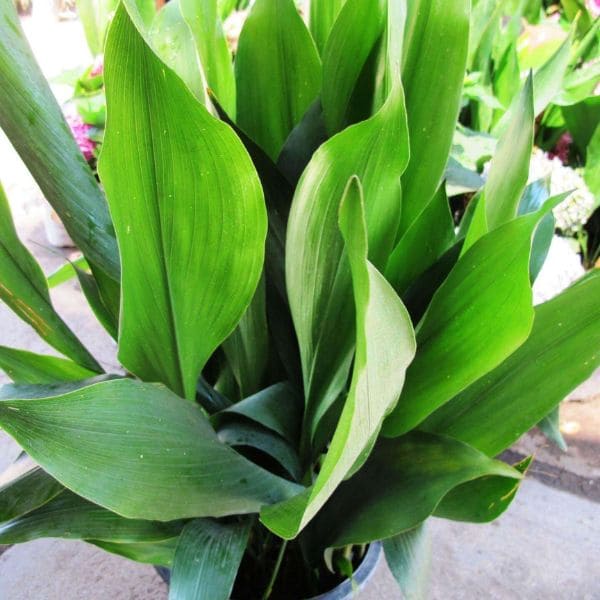
Aspidistra known as the cast iron plant, features large, glossy leaves up to 24 inches long.
Despite lack fragrance, its dark green, elliptical leaves are ideal for background foliage to add boldness to arrangements.
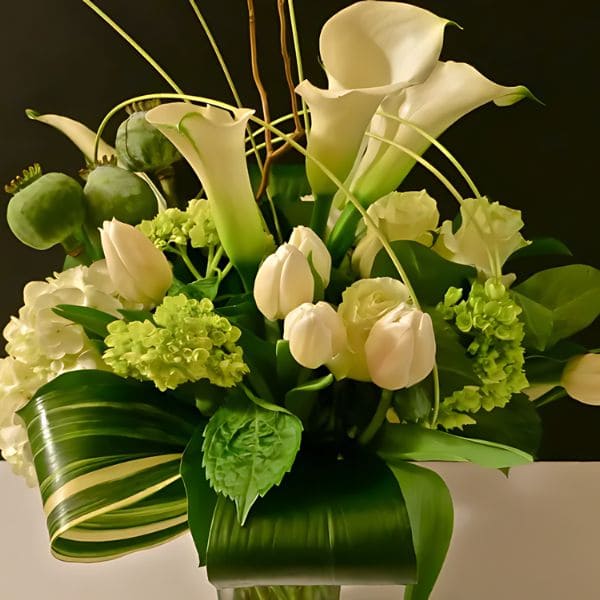
You should harvest vibrant, fully grown aspidistra leaves for a vase life of up to 14 days.
Before arranging, trim stems and remove lower leaves to maintain water cleanliness and prolong the arrangement’s life.
Ruscus (Ruscus aculeatus)

Rucus or butcher’s broom offers versatility with its small, matte green leaves on slender stems, reaching up to 3 feet tall.
This plant is a perfect choice if you are looking for a foliage with durability and airy texture for bouquets.
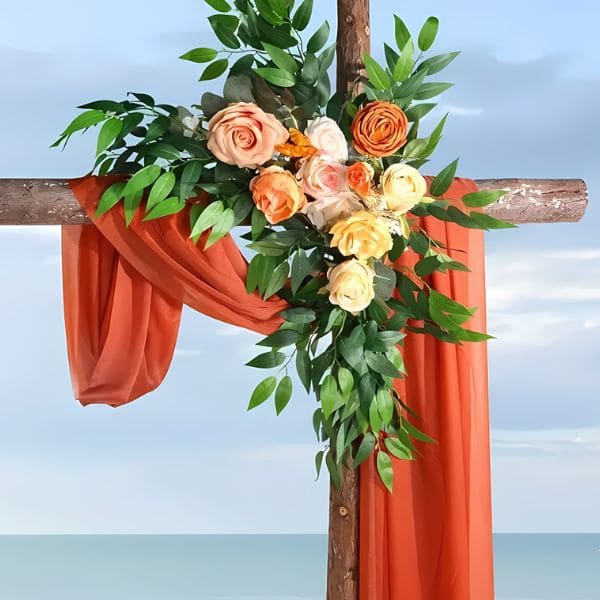
Harvest sturdy stems with firm leaves and trim stems at an angle to remove submerged leaves before arranging to prevent decay. With proper care, your vase can last up to 14 days.
Salal (Gaultheria shallon)
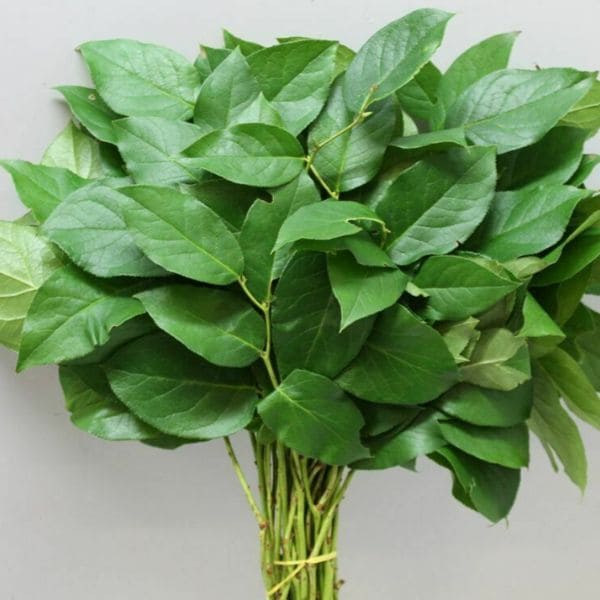
Salal is favored in flower arrangements for its robust, glossy, oval-shaped leaves that can reach up to 4 inches in length.
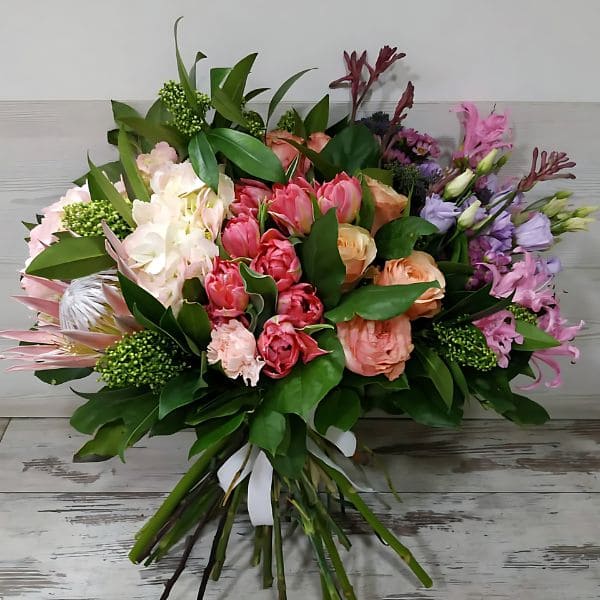
Harvest mature, vibrant leaves to extend its impressive vase life of up to 21 days.
To maintain freshness, you should trim stems and remove lower leaves before arranging.
Ivy (Hedera helix)

Ivy is beloved for its trailing vines and adaptable appearance in floral designs.
Its typically green or variegated leaves feature a distinctive lobed shape, adding a graceful, cascading effect to arrangements.
While ivy lacks flowers or a noticeable fragrance, its lush foliage enhances texture and depth.

You can harvest stems with healthy, vibrant leaves. If you trim stems and remove submerged leaves regularly, your vase life will last up to 10 days.
Dusty Miller (Jacobaea maritima)

Dusty Miller remains a popular choice for its striking silver-gray leaves, heights of 1 to 2 feet, which boast a soft, velvety texture and lobed structure.
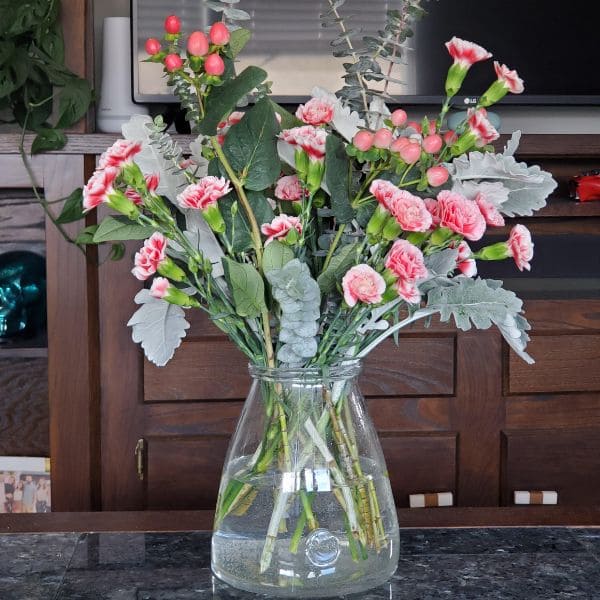
Harvest mature, firm leaves for a vase life of up to 10 days with proper care.
Before arranging, you should trim stems and remove lower leaves to ensure the foliage remains fresh and the water stays clean.
Monstera (Monstera deliciosa)
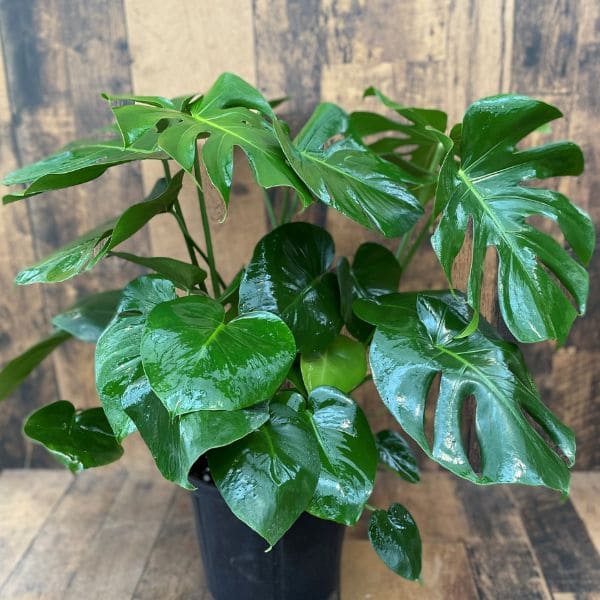
Monstera stands out in flower arrangements for its large, glossy green leaves adorned with distinctive splits and holes, which can reach lengths of up to 3 feet.
Although rarely flowering indoors, monstera adds a bold, tropical flair and is prized as background foliage bringing fresh green beauty filled with vitality.
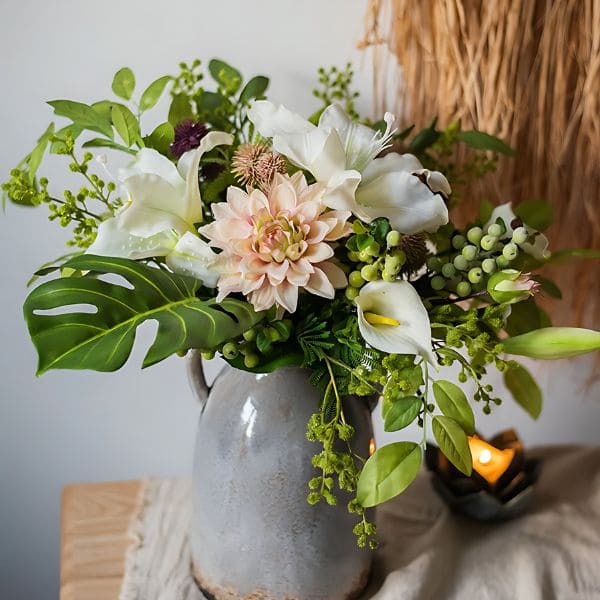
You should harvest fully grown, then trim stems at an angle and remove lower leaves to prevent water contamination, so you can ensure vase life of up to 14 days.
Palm Leaves (Arecaceae)
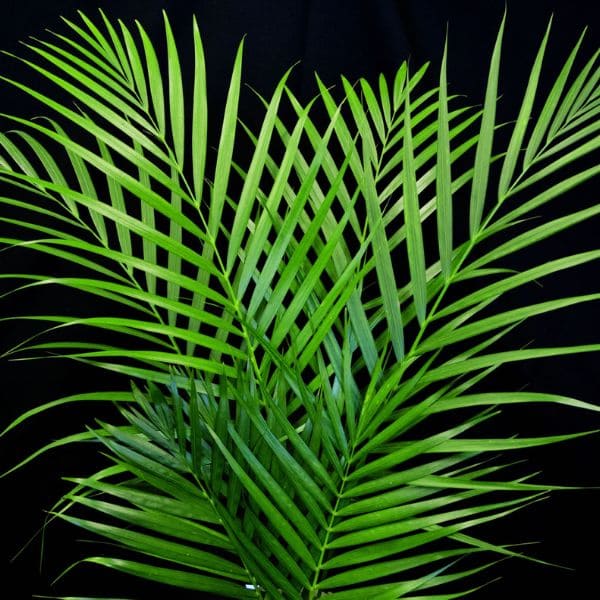
Palm leaves are sought-after in floral arrangements for their expansive, fan-shaped, or feather-like green leaves that can tower several feet high, imparting a dramatic tropical touch.
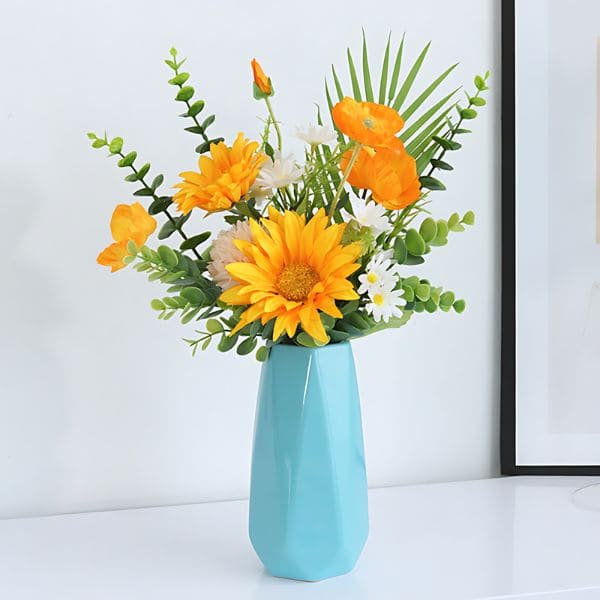
Before arranging, you need to trim stems and remove lower leaves to maintain water cleanliness and preserve foliage freshness.
Then you can use mature, vibrant leaves for a vase life of up to 14 days.
Pittosporum (Pittosporum tobira)
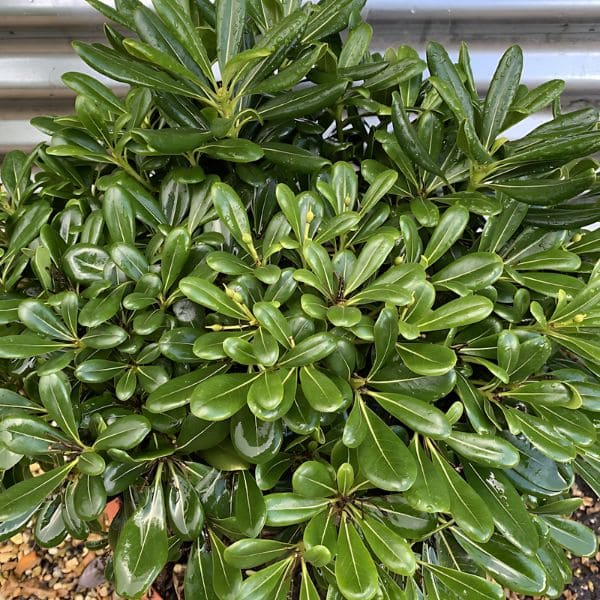
Pittosporum is cherished in flower arrangements for its small, glossy green or variegated elliptical leaves, adding elegance and texture.
Although it can grow as a shrub up to 10 feet tall, foliage is typically sourced from more manageable branches.
While Pittosporum produces small, fragrant flowers, its leaves take center stage in floral designs.
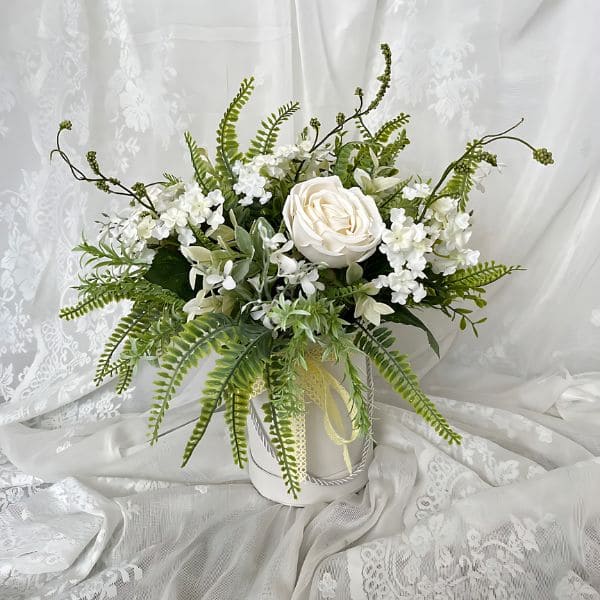
Harvest vibrant, healthy leaves for a vase life of up to 14 days. Prepare by trimming stems and removing submerged leaves to prevent decay.
Hosta (Hosta spp.)
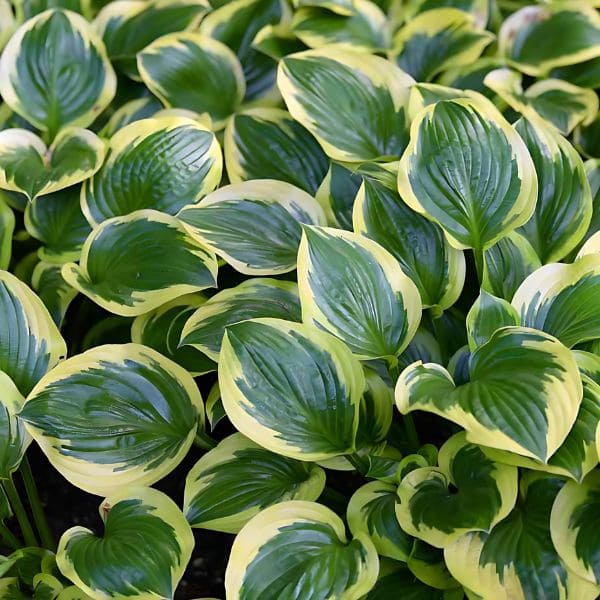
Hosta is esteemed in flower arrangements for its sizable, lush leaves, typically heart-shaped and varying in shades of green with occasional variegation.
Growing up to 2 feet tall, Hostas provide a substantial backdrop for floral displays, prioritizing foliage over its white or lavender flowers.

You vase life can last up to 10 days with proper care. Also, before arranging, you need to trim stems and remove lower leaves to maintain water cleanliness and ensure longevity.
Magnolia(Magnolia grandiflora)

Magnolia stands out for its striking large, glossy green leaves, reaching lengths of up to 10 inches, which add elegance and richness to bouquets.
Although Magnolia trees can grow tall, foliage is typically sourced from lower branches.
In addition, the plant’s flowers are beautiful and fragrant, the focus in arrangements is on the leaves.
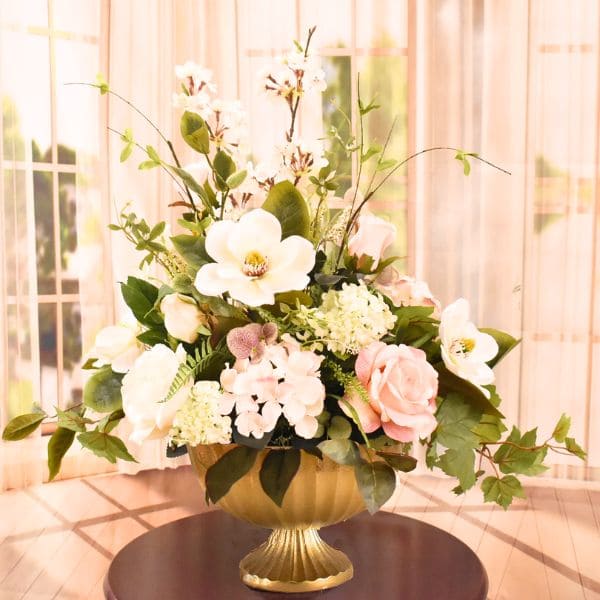
You should prepare for the vase arrangement by harvesting mature, vibrant leaves, trimming stems and removing lower leaves to keep water clean and extend freshness.
Boxwood (Buxus sempervirens)
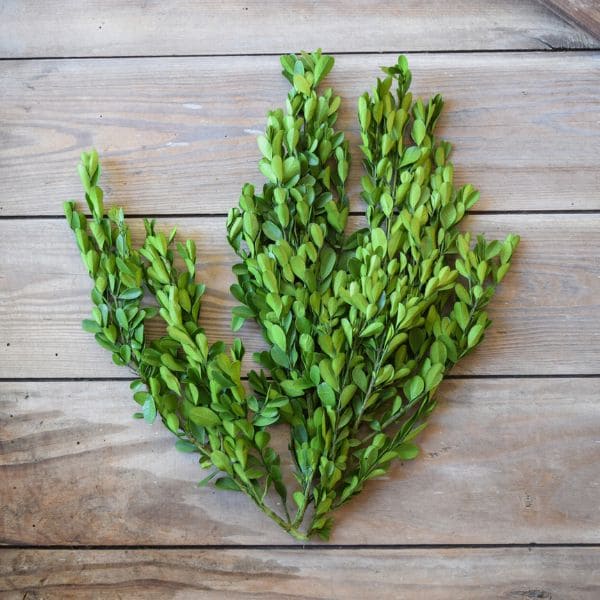
Boxwood remains a classic choice appreciated for its dense, oval-shaped, glossy green leaves that create a textured backdrop in floral displays.
Despite potentially towering up to 20 feet, foliage is typically sourced from smaller branches.
Because of lacks significant flowers or fragrance, it is used for background of decorating party, wedding.

You should harvest vibrant, healthy leaves for a vase life of up to 14 days.
Prepare by trimming stems and removing lower leaves to ensure water cleanliness and maintain foliage freshness.
Olive Branches (Olea europaea)

Olive branches are a chic addition to flower arrangements with slender, silver-green lance-shaped leaves a Mediterranean ambiance.
Although olive trees can grow tall, branches are typically harvested from more accessible sections.
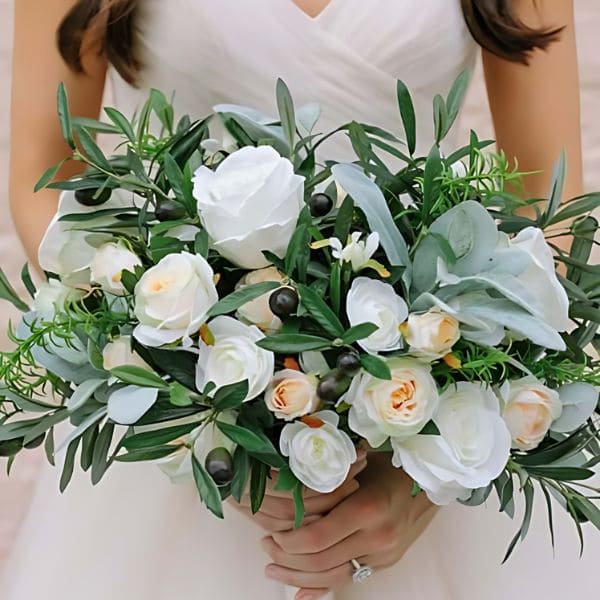
You should harvest branches when leaves are mature. Especially, prior to arranging, trim stems and remove lower leaves to maintain water quality and extend freshness.
Nandina (Nandina domestica)
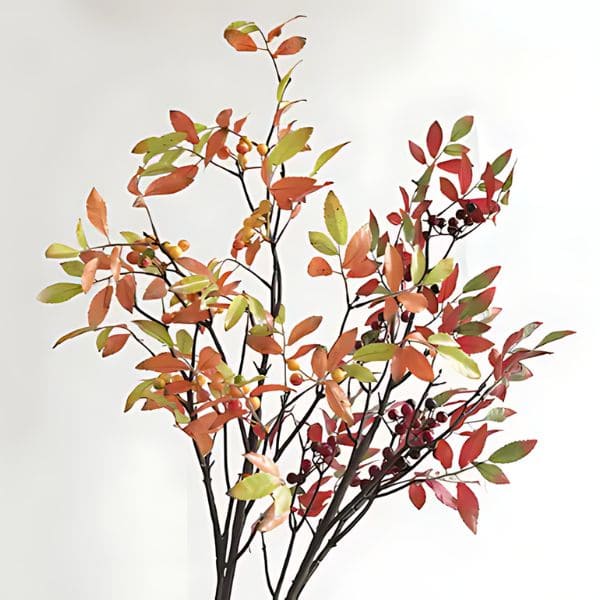
Nandina known as heavenly bamboo offers versatile foliage with delicate, compound leaves that shift from green to red and bronze with the seasons.
Growing up to 8 feet tall, Nandina provides abundant vibrant foliage. While it produces small white flowers and red berries, its foliage is prized for its color and texture.
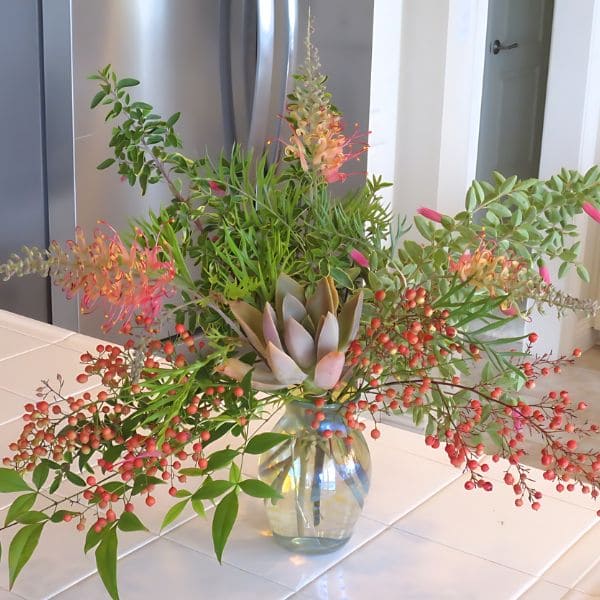
You should harvest mature, colorful leaves and trim stems or a vase life of up to 10 days. Nandina is often used to add color and a feathery texture to arrangements.
Myrtle (Myrtus communis)
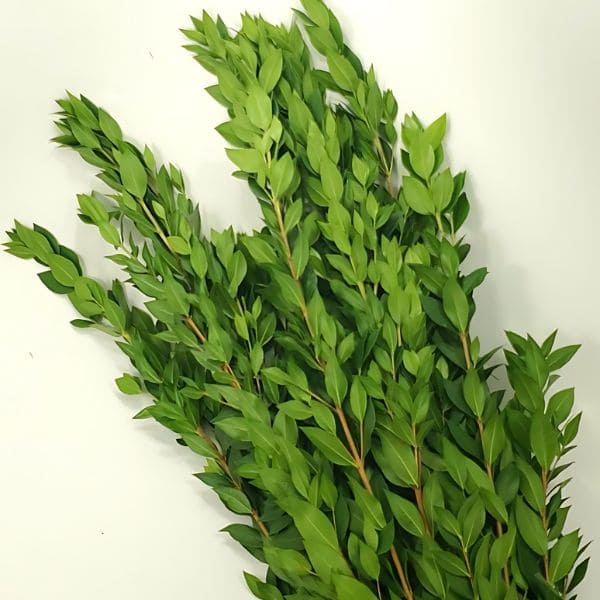
Myrtle is one of the choice for flower arrangements, featuring small, glossy green lance-shaped leaves and fragrant white flowers.
Myrtle foliage is dense and rich in texture enhancing bouquets with its refreshing aroma.
Although Myrtle can grow up to 8 feet tall, foliage is typically harvested from more manageable branches. With proper care, Myrtle leaves can last up to 14 days in a vase.
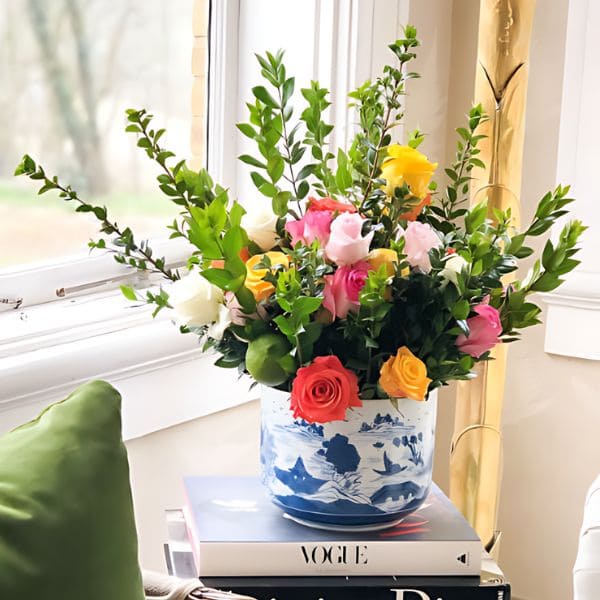
Before arranging, you need to trim stems and remove lower leaves to maintain water cleanliness and freshness.
Camellia (Camellia japonica)
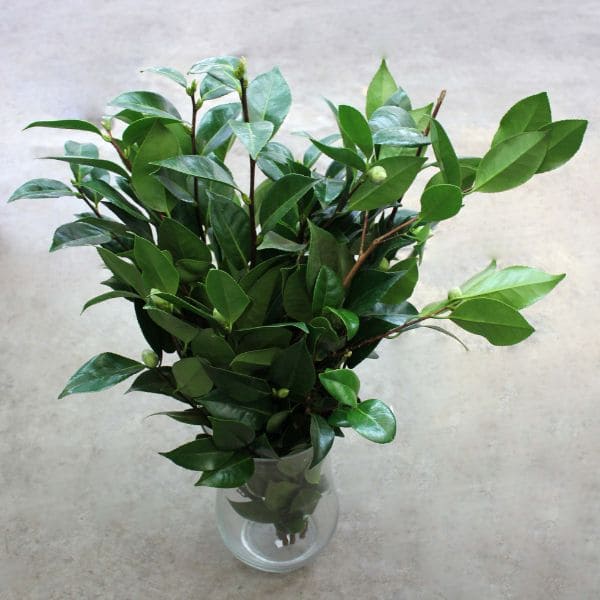
Camellia is esteemed in flower arrangements for its glossy, dark green elliptical leaves, offering a sophisticated backdrop.
While Camellia shrubs can grow up to 12 feet tall and bear stunning, fragrant flowers in white, pink, and red, the foliage is often used to add shine and sophistication to bouquets.

You can harvest vibrant, healthy leaves for a vase life of up to 10 days. Prior to arranging, trim stems and remove lower leaves to maintain water quality and freshness.
Aralia (Aralia elata)
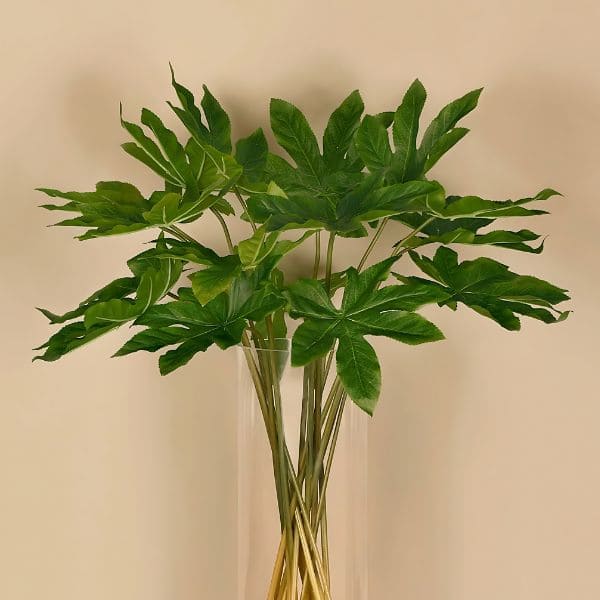
Aralia brings a bold, tropical touch into your home with large, glossy green palmate leaves deeply lobed.
Despite potentially reaching heights of 20 feet, foliage taking center stage is typically harvested from smaller branches.
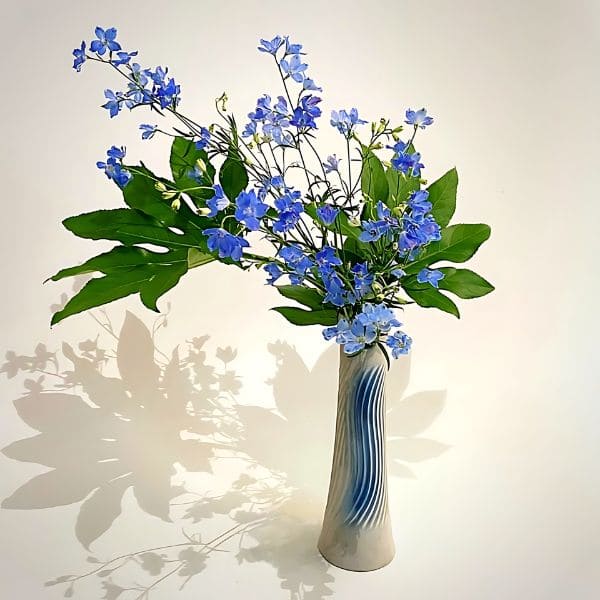
People often use Aralia to enhance arrangements with dramatic texture and volume.
Before arranging, trim stems and remove lower leaves to ensure water cleanliness and preserve foliage freshness to ensure a vase life of up to 14 days.
Echeveria (Echeveria spp.)
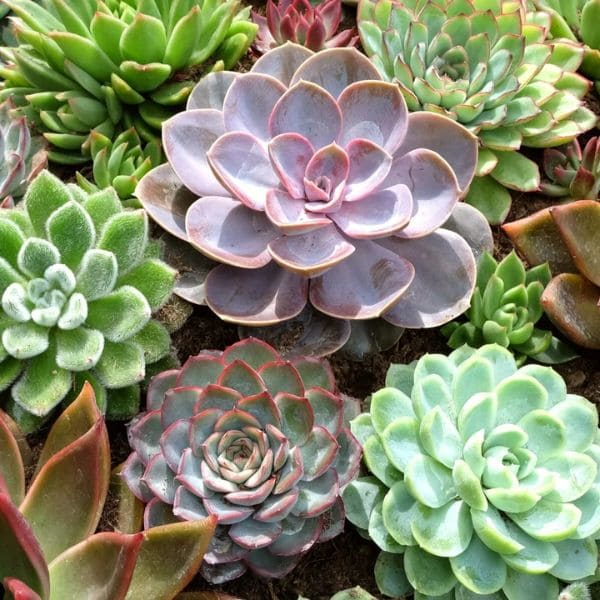
Echeveria offers a distinctive option with its rosette-shaped succulent leaves in shades of green, blue, or purple, boasting a smooth, fleshy texture ideal for modern bouquets.
Although echeveria plants are small, with diameters typically up to 8 inches, their striking foliage is preferred over their flowers.
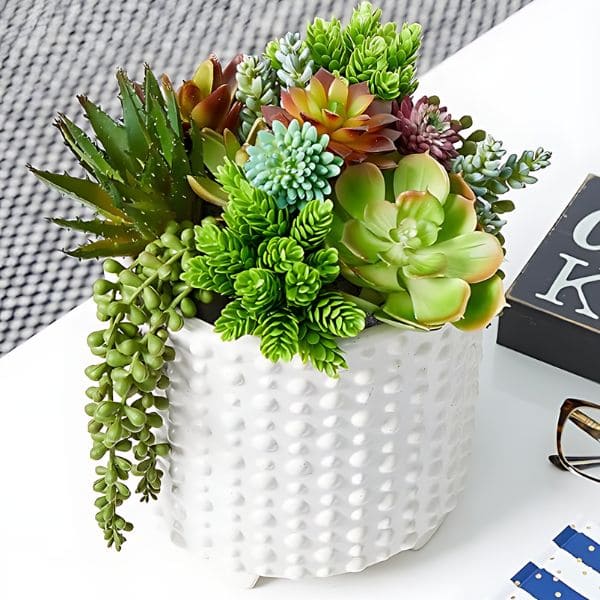
Harvest plump, vibrant leaves for a vase life of up to 14 days with proper care.
You can use Echeveria to introduce modern elegance and texture to designs but ensure leaves are dry and handle gently before arranging to prevent damage.
Scented Geranium (Pelargonium graveolens)
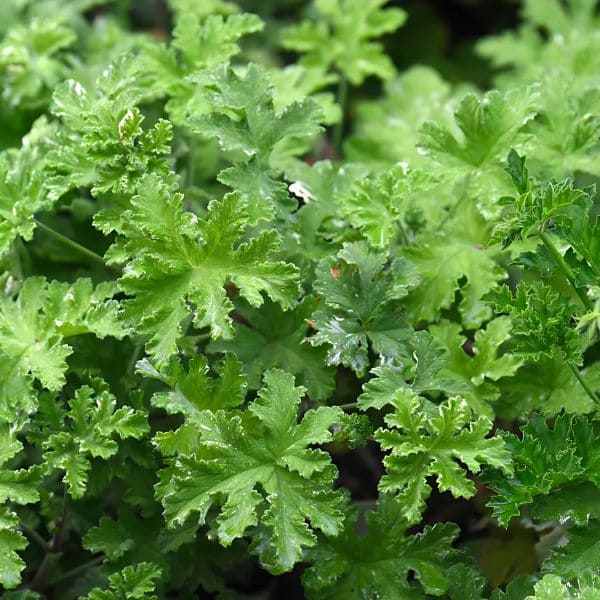
The citrusy scent of scented geranium brings relaxed and comfortable feeling. Its vibrant, fragrant leaves can have a vase life of up to 7 days.
Despite potentially growing up to 3 feet tall and producing small pink flowers, the aromatic foliage remains the main attraction.
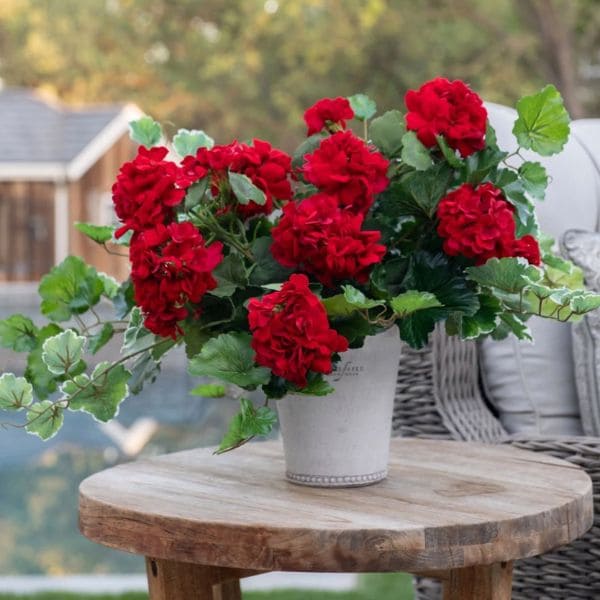
Use scented geranium to add both texture and fragrance to arrangements. Before arranging, trim stems and enhance foliage longevity by adding flower food to your vase if needed.


